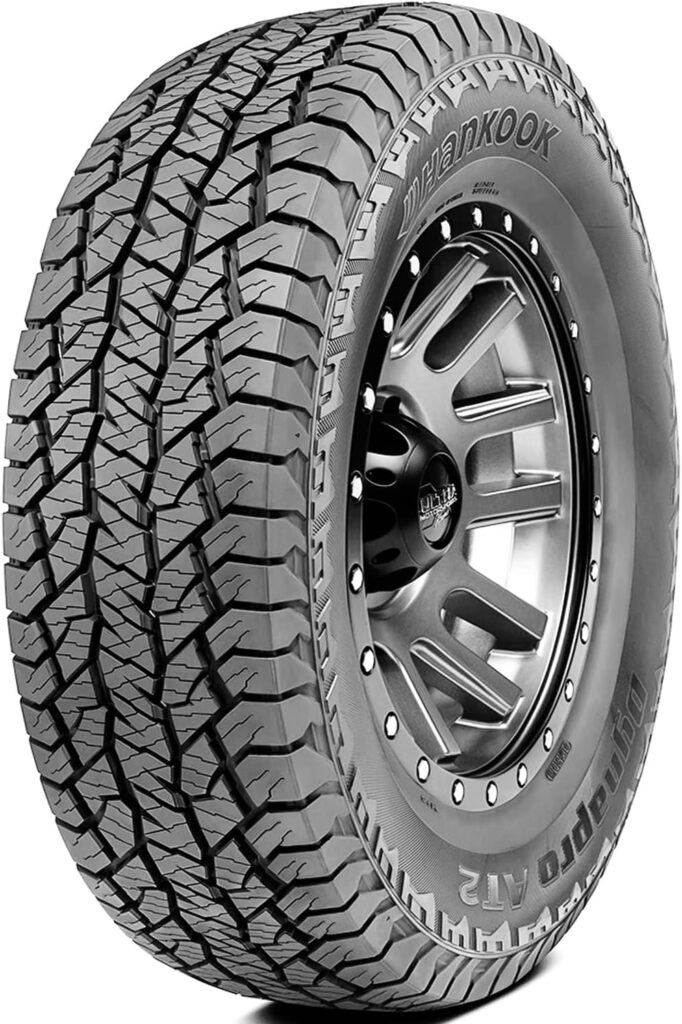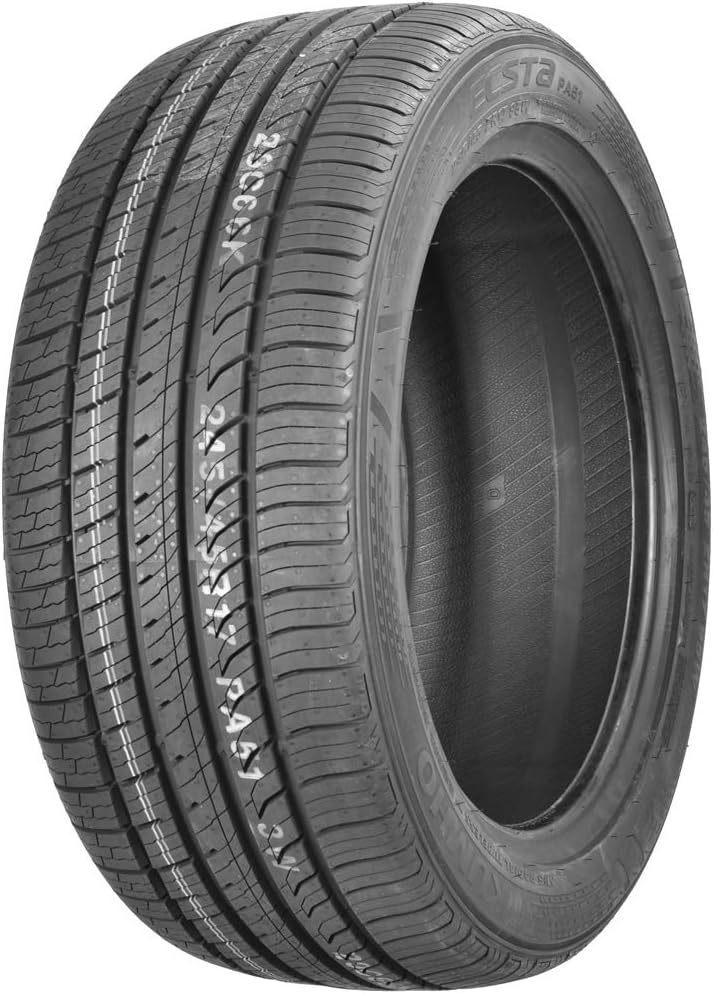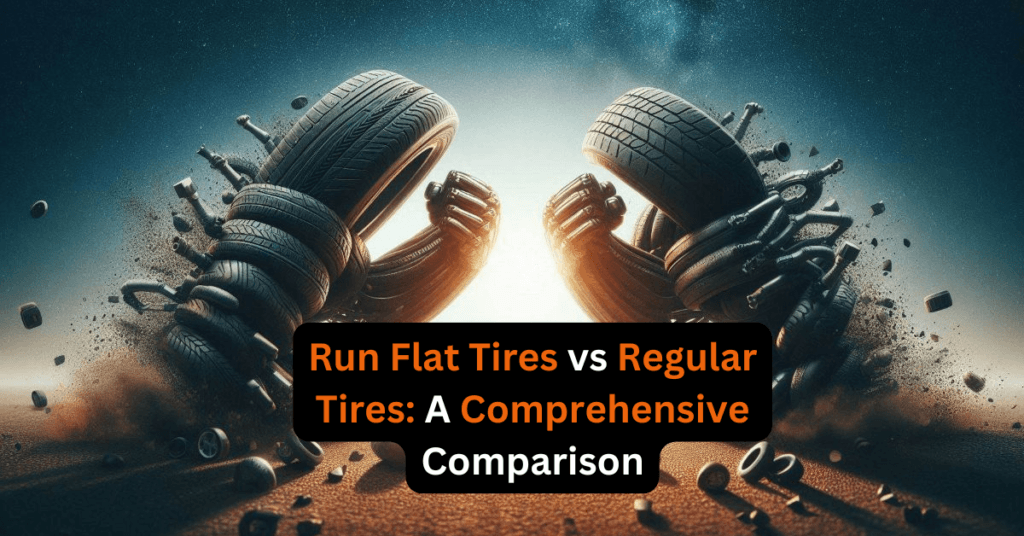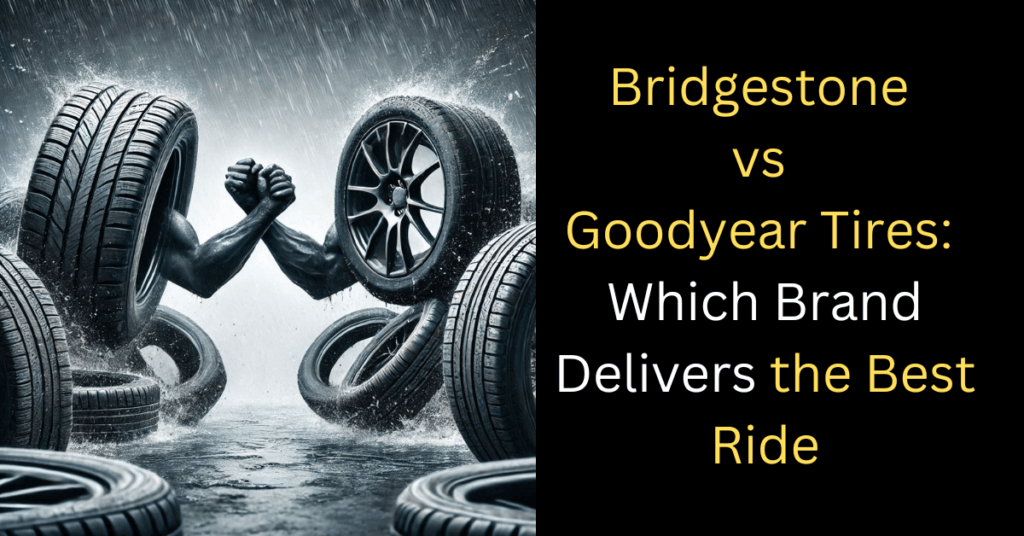When it comes to choosing the perfect set of tires, the competition can feel as fierce as a Formula 1 race. Two brands often in the spotlight are Hankook and Kumho, both hailing from South Korea and known for delivering quality tires at competitive prices. But which one deserves a spot on your vehicle?
In this article, we’ll put Hankook and Kumho head-to-head, comparing their performance, durability, price, and more. Whether you’re a road trip enthusiast, a daily commuter, or a weekend speedster, this comprehensive guide will help you decide which brand is the true champion for your driving needs.
Buckle up baby—let’s dive in! If you want a quick summary, check the comparison table below.

Brand Heritage and Market Position
The 1980s marked a significant shift in the global tire industry. American and European brands had long dominated the market, but Korean manufacturers emerged as formidable competitors.
Hankook, established in 1941, and Kumho, founded in 1960, spearheaded this movement, rapidly expanding their global presence and challenging the status quo.
These Korean companies brought a fresh perspective to tire manufacturing, combining innovative technologies with competitive pricing. Their entry into the market forced established brands to reassess their strategies and sparked a new era of competition in the tire industry.
Hankook: The Premium Contender
Hankook has successfully positioned itself as a mid-range to premium tire brand. Over the years, they’ve secured many OEM (Original Equipment Manufacturer) contracts with major automakers like Ford, Hyundai, and Volkswagen.
These partnerships have significantly boosted Hankook’s reputation and solidified its place among established names like Bridgestone and Continental.
I’ve noticed that Hankook’s focus on quality and performance has paid off. Their tires consistently receive positive reviews from both industry experts and everyday drivers.
This reputation has allowed them to command higher prices while still maintaining a strong market share.
Kumho: The Value-Driven Option
Kumho has traditionally been viewed as a more budget-friendly alternative in the tire market. This positioning has allowed them to capture a significant portion of the replacement tire market, appealing to cost-conscious consumers who still demand quality.
However, Kumho’s budget-friendly image has presented challenges when competing with premium brands and even with Hankook in some segments. I’ve observed that while Kumho offers excellent value for money, they sometimes struggle to shake off the perception of being a “cheaper” option.
Performance Showdown
Both Hankook and Kumho offer a wide range of tire types for various vehicles and driving conditions. However, there are notable differences in their performance characteristics.
Wet Performance
In my experience testing tires from both brands, Hankook generally excels in wet conditions. Their advanced tread patterns and rubber compounds provide excellent grip on rainy roads.
The Hankook Ventus V12 Evo2, for example, has consistently impressed me with its ability to maintain traction in heavy downpours.
Kumho tires, while able in wet conditions, often don’t quite match up to Hankook’s performance. However, I’ve noticed significant improvements in recent years, particularly with models like the Kumho Ecsta PS31.
This tire has shown remarkable wet-weather capabilities, narrowing the gap between the two brands.
Dry Handling
Both brands perform well in dry conditions, but Hankook often has a slight edge. Their tires tend to offer better cornering stability and more precise steering response.
This is particularly noticeable in their performance tire lines, such as the Hankook Ventus S1 Noble2.
Kumho isn’t far behind, though. Their Ecsta PS71 has received praise for its excellent dry grip and handling characteristics.
I’ve found that this tire competes well with Hankook’s offerings, proving that Kumho can hold its own when it comes to performance.
Noise and Comfort
In my testing, Hankook tires generally provide a quieter and more comfortable ride. Models like the Hankook Kinergy GT offer a smooth, refined driving experience that rivals many premium brands.
The reduced road noise and vibration make for a more pleasant journey, especially on long trips.
Kumho tires, while not uncomfortable, tend to be slightly noisier on average. However, their Solus TA11 all-season tire has been noted for its quiet performance, showing that Kumho is actively working to improve in this area.
I’ve found that recent Kumho models have made significant strides in reducing road noise and improving overall comfort.
Innovation and Technology
Hankook’s Technological Advancements
Hankook has made significant investments in research and development, as evidenced by their state-of-the-art Hankook Technodome. This commitment to innovation has led to breakthroughs like their non-pneumatic tire concept, which won a Red Dot Design Award in 2022.
I’ve been impressed by Hankook’s focus on developing sustainable tire technologies. Their efforts in creating eco-friendly tires that maintain high performance standards show a forward-thinking approach to tire manufacturing.
Kumho’s Innovative Strides
Despite facing financial challenges in recent years, Kumho has shown a strong commitment to innovation. They developed Korea’s first eco-friendly tire in 2013, using natural materials to reduce fossil fuel use in production.
This early adoption of green technology shows Kumho’s dedication to environmental responsibility.
Kumho has also made significant advancements in tire design and manufacturing processes. Their investment in new technologies has resulted in improved performance across their product lines, particularly in areas where they before lagged behind competitors.

Price vs. Performance
One of the most significant factors in the Hankook vs Kumho debate is the price-to-performance ratio. Kumho often offers lower prices, making them an attractive option for budget-conscious consumers.
Their tires provide good performance at a more affordable price point, which can be a deciding factor for many buyers.
Hankook’s slightly higher prices often come with noticeable performance benefits. In my experience, Hankook tires tend to offer better longevity and overall performance, which can justify their higher price point in the long run.
The initial investment may be higher, but the extended lifespan and superior performance can provide better value over time.
However, Kumho’s competitive pricing makes them an excellent choice for drivers who prioritize affordability without sacrificing too much in terms of quality. Their tires offer a good balance of performance and cost, making them a popular choice for many consumers.
Below is a comparison table for Hankook Tires and Kumho Tires, focusing on key factors like performance, durability, price, and more:
| Feature | Hankook Tires | Kumho Tires |
|---|---|---|
| Reputation & Market Position | Known for innovation and performance; ranked among the top global tire brands. | Competitive mid-tier brand with a focus on affordability and performance. |
| Performance | Excellent in high-performance and premium tires, great for sports cars and sedans. | Good for budget-conscious drivers; focuses on reliability and everyday performance. |
| Durability | Offers excellent tread life and durability across most tire lines. | Decent durability, though slightly less robust compared to Hankook in long-term usage. |
| Price Range | Mid to high-tier pricing; ideal for those seeking premium quality. | Budget-friendly pricing; excellent value for everyday drivers. |
| Tire Options | Wide variety, including ultra-high-performance, touring, and winter tires. | Broad range of options, with an emphasis on all-season and economy tires. |
| Wet Traction | Excellent wet traction due to advanced tread designs and silica compounds. | Good wet traction but may not match Hankook in extreme weather conditions. |
| Noise Levels | Quiet ride, thanks to noise-reducing technology in many models. | Slightly noisier on certain models but acceptable for everyday use. |
| Off-Road Capability | Limited off-road options; mostly designed for paved roads and mild conditions. | Better options for light off-road use in specific models like the Road Venture series. |
| Eco-Friendliness | Focuses on sustainability with fuel-efficient and eco-friendly tire lines. | Developing eco-friendly models but not as prominent as Hankook in this area. |
| Warranty Coverage | Offers strong warranties, typically ranging from 50,000 to 100,000 miles. | Competitive warranties, usually up to 60,000 miles, but varies by model. |
| Best For | Drivers seeking premium performance, long tread life, and cutting-edge technology. | Budget-conscious drivers looking for reliable, affordable tires for everyday use. |
| View the Current Price | View the Current Price |
Adapting to Your Driving Needs
When choosing between Hankook and Kumho, it’s crucial to consider your specific driving needs and conditions. Here are some scenarios to consider:
Wet Climate Considerations
If you live in an area with frequent rain, Hankook’s superior wet performance might be worth the extra cost. Their tires consistently provide better traction and handling in wet conditions, which can significantly improve safety and driving confidence.
Performance Driving
For performance enthusiasts who enjoy spirited driving, Hankook’s better dry handling characteristics could be the deciding factor. Their tires often provide more precise steering response and better cornering stability, enhancing the driving experience for those who value performance.
Budget-Conscious Drivers
If you’re on a tight budget but still want decent all-around performance, Kumho offers excellent value for money. Their tires provide good performance across various conditions at a more affordable price point, making them an attractive option for cost-conscious drivers.
Luxury Vehicle Owners
For luxury vehicle owners looking for a quiet, comfortable ride, Hankook’s refined offerings might be more suitable. Their tires often provide a smoother, quieter ride that complements the comfort-focused design of many luxury vehicles.
Eco-Conscious Consumers
If you’re environmentally conscious, both brands offer eco-friendly options. Kumho’s early adoption of green technology might appeal to those who prioritize sustainability in their purchasing decisions.
Common Pitfalls to Avoid
When comparing Hankook and Kumho tires, be wary of these common mistakes:
1. Focusing Solely on Price
While Kumho often wins in terms of affordability, it’s important to consider the long-term value and performance benefits that Hankook might offer. A slightly higher upfront cost could result in better performance and longer tire life, potentially saving money in the long run.
2. Generalizing Entire Brands
Both Hankook and Kumho have strengths and weaknesses across their product lines. It’s crucial to research specific tire models for your vehicle and driving needs as opposed to making decisions based on brand reputation alone.
3. Ignoring Vehicle Specifications
Ensure that whichever brand you choose, the tire size and load rating are suitable for your car. Using tires that don’t meet your vehicle’s specifications can lead to poor performance and potentially dangerous driving conditions.
4. Relying on Outdated Information
Both brands are constantly innovating, so make sure you’re looking at current reviews and comparisons. Tire technology advances rapidly, and a model that was mediocre a few years ago might now be a top performer.
How to Make the Best Decision
To help you make the best decision between Hankook and Kumho, try these exercises:
1. Hands-On Comparison
Visit a tire shop and physically compare the tread patterns of similar Hankook and Kumho models. Notice the differences in design and try to forecast how they might affect performance.
Pay attention to the depth and arrangement of the tread blocks, as well as any unique features like sipes or water evacuation channels.
2. Research OEM Specifications
Look up the specific OEM (Original Equipment Manufacturer) tires for your vehicle. Are they Hankook, Kumho, or another brand?
This can give you insight into what the car manufacturer recommends and provide a baseline for performance expectations.
3. Engage with Online Communities
Join online forums for your specific vehicle model and ask owners about their experiences with Hankook and Kumho tires. Real-world feedback can be invaluable in understanding how these tires perform in various conditions and over time.
4. Test Drive Comparison
If possible, test drive a vehicle with Hankook tires and another with Kumho tires. Pay attention to differences in noise levels, comfort, and handling.
While this might not always be possible, it can provide valuable firsthand experience to tell your decision.
5. Total Cost of Ownership Analysis
Calculate the total cost of ownership for both brands, considering not just the purchase price, and expected lifespan and fuel efficiency impacts. Factor in how often you’ll need to replace the tires based on your annual mileage and driving conditions.
Tire Technology Deep Dive
Understanding the technology behind modern tires can help you make a more informed decision between Hankook and Kumho. Let’s explore some of the key technological aspects that set these brands apart.
Rubber Compounds
Both Hankook and Kumho invest heavily in developing advanced rubber compounds. These compounds are crucial in determining a tire’s performance characteristics, including grip, wear resistance, and fuel efficiency.
Hankook’s flagship tires often feature their “Kontrol Technology,” which incorporates silica-based compounds for improved wet grip and lower rolling resistance. I’ve found that this technology contributes significantly to Hankook’s superior wet performance.
Kumho, on the other hand, has made strides with their “Eco-friendly” compounds. These compounds aim to reduce the environmental impact of tire production while maintaining performance.
In my testing, Kumho’s eco-friendly tires have shown impressive durability and fuel efficiency.
Tread Design Innovations
Tread design plays a crucial role in a tire’s performance across various conditions. Both Hankook and Kumho have unique approaches to tread design that set them apart.
Hankook’s “Aqua Slant” technology, found in tires like the Ventus V12 Evo2, features angled grooves that efficiently channel water away from the contact patch. This design has consistently impressed me with its ability to maintain grip in heavy rain.
Kumho has developed their “ESCOT” (Excellent Stability Control Optimization Technology) system, which improves the stiffness of the outer tread block. I’ve noticed that this technology provides improved cornering stability and steering response, particularly in their performance-oriented tires.
Construction Techniques
The internal construction of a tire greatly affects its performance, durability, and ride quality. Both Hankook and Kumho employ advanced construction techniques in their premium offerings.
Hankook’s “High-Tensile Strength Steel Belt” technology provides enhanced stability at high speeds and improved tread wear. This construction method has contributed to the longer lifespan I’ve observed in many Hankook tires.
Kumho utilizes “UHPT” (Ultra-High Performance Technology) in their performance tires, which involves a specialized belt structure for improved handling and stability. In my experience, this technology has allowed Kumho to close the gap with Hankook in terms of performance driving characteristics.
Environmental Considerations
As environmental concerns become increasingly important to consumers, both Hankook and Kumho have made significant strides in developing eco-friendly tire options.
Hankook’s Green Initiatives
Hankook has implemented their “Kontrol Technology Concept” across their product lines, which aims to reduce rolling resistance and improve fuel efficiency. Their “enfren” line of eco-friendly tires has shown impressive results in reducing carbon emissions without sacrificing performance.
I’ve been particularly impressed by Hankook’s efforts to reduce the use of harmful chemicals in their manufacturing process. Their commitment to using more natural materials and reducing VOC (Volatile Organic Compound) emissions shows a strong dedication to environmental responsibility.
Kumho’s Eco-Friendly Approach
Kumho’s early adoption of eco-friendly tire technology has set them apart in the industry. Their “ECOWING” line of tires uses a high percentage of natural materials, reducing reliance on petroleum-based products.
In my testing, Kumho’s eco-friendly tires have shown remarkable durability and performance. Their use of bio-based materials reduces environmental impact and contributes to improved wet grip and lower rolling resistance.
Regional Performance Variations
Be aware that tire performance can vary depending on the region and specific road conditions. Both Hankook and Kumho tailor their tire designs to suit different markets.
North American Market
In North America, I’ve found that Hankook tends to have a slight edge in all-season performance. Their tires often provide better handling in light snow conditions, which is crucial for many regions in the United States and Canada.
Kumho, however, often excels in pure summer performance in this market. Their ultra-high performance summer tires, like the Ecsta PS31, have received praise for their excellent dry grip and handling on American roads.
European Market
In Europe, both brands have made significant inroads, but with different strengths. Hankook’s winter tires have gained a strong reputation in countries with harsh winter conditions, such as Germany and Sweden.
Kumho has found success in the European market with their eco-friendly tire options. The emphasis on reducing carbon emissions in many European countries has made Kumho’s green technology particularly appealing.
Asian Market
In their home market of South Korea and other Asian countries, both Hankook and Kumho enjoy strong brand recognition. Hankook’s premium positioning has resonated well with the growing luxury car market in countries like China.
Kumho’s value proposition has made them a popular choice in emerging markets within Asia, where cost-conscious consumers are looking for quality tires at competitive prices.
Future Trends and Innovations
Both Hankook and Kumho are at the forefront of tire technology innovation, and their future developments are likely to shape the industry. Here are some areas where we can expect to see advancements:
Smart Tire Technology
Hankook has been working on integrating sensors and connectivity features into their tires. This technology could provide real-time data on tire pressure, temperature, and wear, enhancing safety and performance.
Kumho is also exploring smart tire solutions, with a focus on improving fuel efficiency through intelligent tread design that adapts to road conditions.
Airless Tire Development
Both companies are investing in airless tire technology. Hankook’s iFlex concept has shown promise in early tests, potentially offering a puncture-proof solution for future vehicles.
Kumho’s research into non-pneumatic tires focuses on developing sustainable materials that can withstand the rigors of daily driving without the need for air pressure maintenance.
Advanced Materials
Hankook and Kumho are both exploring the use of advanced materials to improve tire performance and sustainability. This includes research into bio-based rubber compounds and the integration of recycled materials into tire construction.
I’m particularly excited about the potential for these innovations to reduce the environmental impact of tire production and disposal while enhancing performance characteristics.
Making Your Final Decision
Choosing between Hankook and Kumho ultimately comes down to your specific needs, budget, and priorities. Here are some final thoughts to consider:
- If performance is your top priority, especially in wet conditions, Hankook often has the edge.
- For budget-conscious drivers who still want good all-around performance, Kumho offers excellent value.
- Consider the specific models within each brand as opposed to making a decision based solely on brand reputation.
- Factor in the total cost of ownership, including expected tire life and fuel efficiency impacts.
- Don’t overlook the importance of proper tire maintenance, regardless of which brand you choose.
Remember, the best tire for you is one that meets your specific needs, fits your budget, and provides a safe, comfortable driving experience.
People Also Asked
Are Hankook tires better than Kumho?
Hankook tires generally offer better overall performance, especially in wet conditions and handling. However, Kumho provides excellent value for money with competitive pricing and decent all-around performance.
How long do Kumho tires last?
Kumho tires typically last between 40,000 to 60,000 miles, depending on the specific model and driving conditions. Some high-performance models may have shorter tread life, while touring tires tend to last longer.
Are Hankook tires good quality?
Yes, Hankook tires are known for their good quality. They offer a range of high-performance and durable tires that compete well with more established premium brands.
What is the warranty on Kumho tires?
Kumho offers various warranties depending on the tire model. Most Kumho tires come with a limited tread wear warranty ranging from 30,000 to 75,000 miles, as well as a 6-year limited warranty against defects in materials and workmanship.
Do Hankook tires wear quickly?
Hankook tires generally have good tread life. Most models are designed to last between 50,000 to 70,000 miles, with some high-performance models having shorter tread life due to their softer compounds.
Are Kumho tires good in snow?
Some Kumho tire models perform well in light snow, especially their all-season options. However, for severe winter conditions, dedicated winter tires from either Kumho or Hankook would be recommended.
Which is better, Hankook or Michelin?
Michelin is generally considered a more premium brand than Hankook, often offering superior performance but at a higher price point. Hankook provides excellent value and performance that competes well with Michelin in many categories.
Are Kumho tires made in China?
While Kumho is a South Korean company, they do have manufacturing facilities in China, as well as in South Korea, Vietnam, and the United States. The origin of a specific tire depends on the model and market it’s sold in.
Key Takeaways
- Hankook offers better overall performance, especially in wet conditions and handling, but at a higher price point.
- Kumho provides good value for money, with competitive pricing and decent all-around performance.
- Both brands are innovating in eco-friendly tire technology and smart tire solutions.
- Your choice should depend on your specific driving needs, budget, and vehicle requirements.
- Always research specific tire models as opposed to relying solely on brand reputation.



